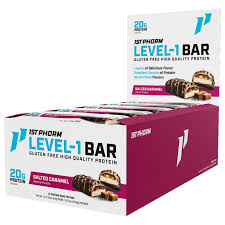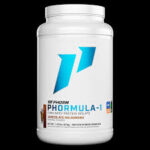
The Triple Protein Effect
*** Health experts say that women need 46 grams of protein per day. But what happens if they get more than triple that amount? Let’s find out. ***
Forty-six grams of protein per day for a female weighing 130 pounds. That is .8 grams per kg of bodyweight. That’s all the average woman needs (according to “experts in the US Government). It must be true because the US government says so and is never wrong. Harvard Health, WebMD, and even ChatGPT also regurgitate the 46-gram guideline.
Women can probably live and survive on 46 grams / day. But would more be optimal? Is “surviving” where the bar is set at?
3 x 46 grams per day is 138 grams per day for those of you not mathematically inclined.
Sure, some of these experts say that athletic women need a smidge more, but they need to be careful (according to Harvard) or else they’ll get “bulky.” Oh, dear…
The problem? That number is based on consuming just enough to remain modestly functional. Forty-six grams keeps your immune system kinda-sorta healthy, and it’s just enough to facilitate wound healing and avoid having brittle nails. Gosh, what else do women want?
Well, if a woman wants to be more than kinda-sorta-mostly-okay at basic human functioning, she’ll want a lot more.
Intake for Women Who Don’t Wanna Be Average Or Just Survive
A recent study found that weight-training females are far better off shooting for around 150 grams daily. Let’s dive in:
- Scientists recruited a group of women described as “aspiring physique athletes.” These were fairly experienced lifters who wanted to compete in a physique competition within a year.
- Half the group was prescribed a lower-protein diet and half a high-protein diet. On average, the lower-protein women consumed 56 grams per day (10 more grams than many “health experts” say to consume, you’ll notice.) The high-protein group consumed about 157 grams of protein per day, with 50 of those grams coming from protein shakes. The formula they used was: 1.15 grams of protein per pound of body weight.
- Both groups went through an 8-week supervised training program designed by an IFBB Bikini Pro.
- The lower group consumed 1416 calories per day (averaged out). The higher group consumed about 1839. All those extra calories in the high group came from protein.

What Happened?
- The high-protein group gained almost 5 pounds of muscle. The lower-protein group gained just over 1 pound of muscle.
- The high-protein group lost 2.4 pounds of fat. The low-protein group lost 1.7 pounds.
What Does This Mean?
The high-protein group gained significantly more muscle than the lower-protein group and lost a bit more fat. But let’s look back at the calories each group consumed.
Remember, the high-protein eaters consumed over 400 more calories per day, all from protein, yet they lost more fat than the lower-protein eaters. In short, it’s virtually impossible to gain body fat from additional protein.
We could’ve guessed that the higher-calorie, high-protein group would’ve gained more muscle, but the amount of muscle was surprising: 3.3 pounds to be exact. That’s really good in just eight weeks.
In a related study, sedentary overweight women experienced similar results. Even without lifting weights, the high-protein eaters gained almost 3 pounds of muscle and lost 2 pounds of fat. The low-protein eaters gained a little fat and lost a little muscle in the same period.
What does this mean? It means weight-lifting women should disregard the “46-grams of rule,” gobble down more lean meat, and have a shake every day to get closer to 150 grams. (And if I had to guess, sedentary should at least shoot for 100 grams daily).
Men, if you’re reading this probably error on the side of consuming more too! (Wink, Wink)!
The Protein Shake
The researchers above had the women supplement with whey protein isolate. That’s good stuff!
We recommend 1st Phorm Supplements. Read on if interested click the link of the name and order today:
1st Phorm Options
- Phormula-1
- This is their Whey Protein Isolate, meant for fast absorption (ideal post-workout).
- One scoop gives ~ 23 g of protein.
- Low-temperature processed, cross-flow micro-filtered (high quality).
- Many flavor options: chocolate milkshake, salted caramel, peanut butter, etc.
- Phormula-1 Natural
- Same base as Phormula-1 (whey isolate), but Naturally Sweetened (no artificial sweeteners).
- One scoop is about 21 g of protein.
- Good if you want a “cleaner” protein with fewer additives.
- Phormula-1 Clear
- A clear whey protein isolate (more like a juice texture rather than a milky shake).
- Also quickly absorbed, great for post-workout if you don’t like the texture of typical whey.
- Level-1
- This is a Sustained-Release protein (not isolate): it digests more slowly, like a whole-food protein.
- Contains ~ 23–25 g of protein per scoop.
- Has 5 g of BCAAs and 2 g of glutamine.
- Good for “anytime” use (not just post workout) or as a meal-praotein.
- Level-1 Natural
- Similar to Level-1 but Naturally Sweetened.
- Also sustained-release, good for regular daily protein, and has no artificial sweeteners.
Wrapping Up The Facts
In short, the old idea that women only need 46 grams a day ( or .8 grams per KG of bodyweight) is just enough to get by—not enough to look, feel, or perform their best. Studies show that women who eat much more protein, around 100–150 grams a day, build more muscle, burn more fat, and boost their metabolism, even when eating more total calories. Whether you work out or not, higher protein helps your body stay stronger, healthier, and leaner. So if you want real results—not just basic survival—focus on getting more each day through food or quality supplements like 1st Phorm. If you are interested in learning more or want to discuss personal training or coaching please click on this link, fill out the form and we will be in contact with you soon. Thanks!



